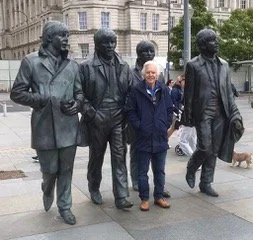By A. Catalina Vélez-Ortega, Ph.D.
Have you ever experienced muffled hearing after leaving a loud environment? My team of researchers at the University of Kentucky found that TRPA1 channels contribute to this phenomenon. Our results were published in Nature Communications in June 2023.
A type of ion channel, TRPA1 channels are exceptionally good sensors of tissue damage. Throughout the body, they are known to activate specific types of neurons that send pain signals to the brain. TRPA1 channels are also abundant in the cochlea but their function was unknown given the lack of pain-sensing neurons in this tissue.
We found that, after noise-induced tissue damage, TRPA1 channels in the cochlea initiate a cascade of events to activate the supporting cells that surround the sensory hair cells. We used several imaging techniques and recordings of electrical activity to see the activation of cells within the mouse cochlear tissue after the delivery of chemicals known to bind and open TRPA1 channels.
After TRPA1 activation, the supporting cells contract, change the shape of the cochlear tissue, and were presumed to temporarily change hearing sensitivity. Some of the chemicals we used to activate TRPA1 channels are normally produced in the cochlear tissue or released into the cochlear fluids during/after loud sound stimulation. In fact, they can remain in the cochlear tissue for several days—or even weeks—after an episode of noise exposure.
Therefore, to test the effect of TRPA1 activity on hearing sensitivity, we used normal mice as well as transgenic mice that lack TRPA1 channels and exposed them to loud sound for 30 minutes. Next, we used several tests to evaluate changes in hearing sensitivity for several days after the noise exposure.
Diagram of the cochlear epithelium in young postnatal mice showing inner and outer hair cells and various types of supporting cells. Click here for more details. Credit: Vélez-Ortega et al./Nature Communications
While all mice showed a decrease in hearing sensitivity (muffled hearing) immediately after exposure to noise, mice that lack TRPA1 channels showed a very fast recovery. However, several weeks after the noise exposure, we found permanent changes in cochlear function, but only in the mice that lack TRPA1 channels.
Therefore, the activation of TRPA1 channels in the cochlea seems to be a protective mechanism—like wearing earplugs—that minimizes the exposure to sound while the cochlear tissue is repairing noise-induced damage.
Results from this study highlight an important role for TRPA1 channels in protection against noise-induced hearing damage. Mice lacking TRPA1 channels have typical hearing and only exhibit hearing deficits after noise exposure. As a result, this study suggests that undiagnosed defects in TRPA1-dependent responses in the human population could lead to hidden susceptibilities to cochlear damage after noise exposure or other insults.
A 2018 Emerging Research Grants scientist funded by Cochlear Americas, A. Catalina Vélez-Ortega, Ph.D., is an assistant professor in the department of physiology at the University of Kentucky. She also provided this summary in Spanish.








Now in high school looking back over each grade when I felt embarrassed, I wish I could have told myself that even if people ask questions, by the next day they usually forget about this drawing attention to me.